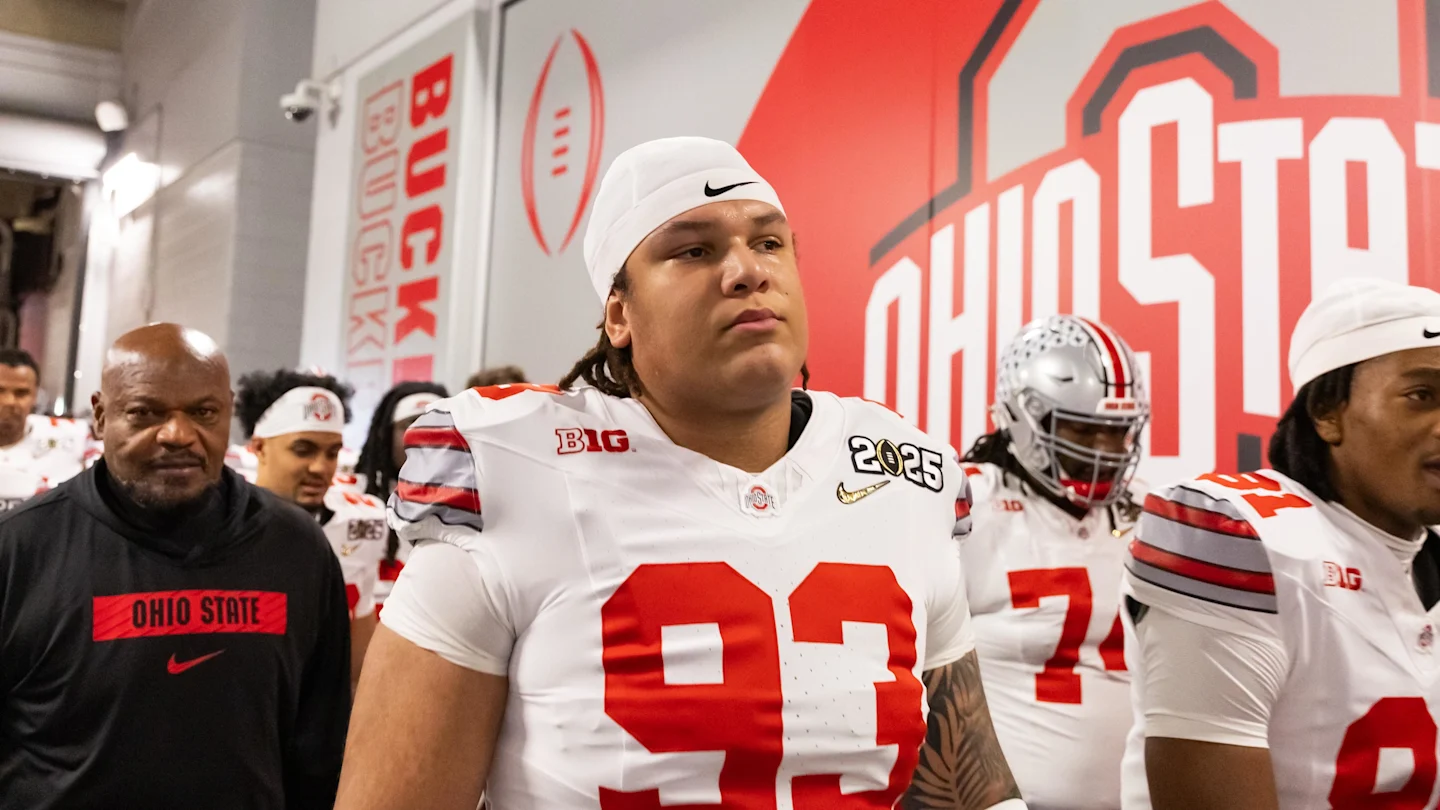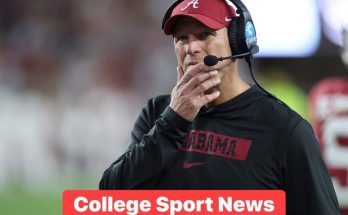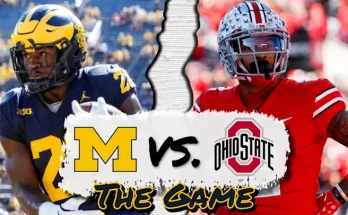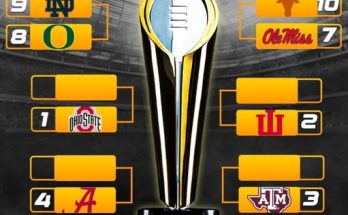Ohio State Football Loses Two Key Players to Transfer Portal – Depth Concerns Grow
The Ohio State football program, one of the most storied and successful teams in college football, has recently been rocked by the unexpected loss of two key players to the transfer portal. These departures have raised significant concerns about the depth of the roster as the Buckeyes prepare for the upcoming season. The transfer portal has increasingly become a factor in the college football landscape, and Ohio State, despite its dominance in recruiting and player development, is no exception to this evolving trend. With these two crucial players opting to transfer, Ohio State finds itself facing some tough questions about how its roster will shape up for the future, especially in key positions that were once seen as solidified.
The Transfer Portal Landscape
Before delving into the specific players who have left, it’s important to understand the broader implications of the transfer portal on college football. Since its introduction in 2018, the transfer portal has drastically altered the landscape of college athletics. It allows players to enter their names into a database to signal their intent to transfer to another school, offering them the ability to explore options for playing time and development. This process has become a regular feature of college football, with players transferring in and out of programs across the country.
At first, the transfer portal was seen as a way for players to find better fits for their talents or opportunities at other schools. Over time, it has also evolved into a strategy for teams to address specific needs, by either filling gaps with high-quality transfers or, conversely, losing talented players who see little opportunity for immediate playing time. For powerhouse programs like Ohio State, the stakes are higher because of the intense competition for playing time at nearly every position.
Despite their status as a perennial national contender, the Buckeyes have not been immune to the growing trend of player movement. Recently, two key contributors decided to enter the portal, leaving Ohio State fans and the coaching staff with mixed emotions about how to move forward.
Departures of Two Key Players
The first key player to enter the transfer portal was defensive back Jahmyr Johnson, a rising sophomore who was expected to make significant strides in Ohio State’s defense this season. Johnson, who had shown flashes of brilliance during the previous season, was highly regarded as one of the top defensive recruits in his class. His blend of speed, agility, and football IQ made him an exciting prospect for the Buckeyes. Many saw him as a future contributor to the secondary, with some even speculating he could be a potential starter in the near future.
However, despite his raw talent, Johnson struggled to carve out consistent playing time during his freshman season. As Ohio State’s secondary is filled with elite talent, including experienced players like Denzel Burke and Jahsen Wint, the depth at the position limited Johnson’s opportunities. Realizing that his path to significant playing time might be blocked for the time being, he decided to enter the transfer portal in search of a school where he could compete for a starting role more immediately.
The second significant departure came in the form of Emeka Egbuka, a wide receiver who had emerged as one of the top playmakers in Ohio State’s receiving corps. Egbuka was part of a highly touted freshman class and had demonstrated his elite speed and ball-catching ability during the 2024 season. His impressive performance in limited opportunities had many speculating that he could be a breakout star for the Buckeyes. However, much like Johnson, Egbuka found himself facing fierce competition for playing time in one of the most loaded receiving groups in the country. Ohio State’s receiving corps is filled with high-profile talent, including the likes of Marvin Harrison Jr., Julian Fleming, and Jaxon Smith-Njigba, all of whom had earned substantial playing time in previous seasons.
Despite being highly productive in limited snaps, Egbuka reportedly became frustrated by his lack of a consistent role in the offense. Faced with the challenge of competing for touches with an all-star cast of receivers, Egbuka decided to seek a new opportunity where he could be a focal point of the offense. His departure marks another blow to Ohio State’s depth, especially in a position group that was already among the deepest in the nation.
The Growing Depth Concerns
With the loss of two key players, Ohio State’s depth at certain positions has suddenly come under the microscope. Defensive back and wide receiver are two areas where the Buckeyes have been consistently loaded with talent, but the departures of Johnson and Egbuka raise significant concerns about the overall depth at these positions.
Defensive Backfield
The defensive backfield, while still one of Ohio State’s strongest units, could be a bit thinner in 2025. With Johnson’s departure, the Buckeyes are left with fewer options in the secondary, especially considering how often they rely on their defensive backs in a pass-heavy Big Ten conference. Ohio State has talent at the position, but losing a player with as much promise as Johnson leaves them with less flexibility.
While Ohio State is still stocked with experienced defensive backs such as Denzel Burke, Cam Brown, and Lathan Ransom, the depth behind them may be stretched thinner than originally anticipated. The Buckeyes will need to rely on younger players to step up and fill the void left by Johnson’s departure. The safety and cornerback positions could see significant turnover as new faces fight for playing time, which could affect the team’s overall stability in the secondary.
This is particularly concerning given the importance of Ohio State’s defensive backfield in the broader landscape of college football. With elite quarterbacks and playmaking wide receivers populating the Big Ten and beyond, a deep and talented secondary is crucial for the Buckeyes’ success. Head coach Ryan Day and defensive coordinator Jim Knowles will need to quickly find solutions to ensure that Ohio State’s secondary remains competitive at the highest level.
Wide Receiver Group
The wide receiver position is another area where Ohio State’s depth has been tested by the departure of Emeka Egbuka. Even though the Buckeyes still boast a remarkable group of wideouts, including Marvin Harrison Jr. and Jaxon Smith-Njigba, Egbuka’s loss represents a blow to an already crowded group. Depth at wide receiver is vital in Ohio State’s fast-paced, high-powered offense, where multiple receivers are needed to create mismatches and keep defenses guessing.
The loss of Egbuka creates an opening for other players, such as Julian Fleming or Xavier Johnson, to seize more prominent roles. While both players have shown flashes of potential, neither has proven to be a consistently dominant presence in the way that Ohio State’s top receivers have been. The Buckeyes will need these players to elevate their game if they are to continue to compete at the level of previous seasons.
It’s important to note that, despite the loss of Egbuka, Ohio State is still one of the top teams in the nation in terms of talent at the wide receiver position. However, the depth that had been built up over the past few seasons has taken a hit. The Buckeyes will need to develop younger players quickly, and the coaching staff will likely have to adjust its strategy to ensure that the offense remains as explosive as it has been in recent years.
Potential Impact on Ohio State’s Season
The loss of two key players, particularly in positions of depth, could have a significant impact on Ohio State’s ability to compete for a national championship in 2025. While the team still has ample talent in key areas, the depth concerns in the defensive backfield and at wide receiver may lead to a decrease in overall team performance. These concerns could also translate to more pressure on Ohio State’s starters, who will be asked to play an even greater role in the team’s success.
If younger players fail to step up in the absence of Johnson and Egbuka, the Buckeyes could find themselves struggling to meet the lofty expectations that are always associated with their program. Furthermore, if injuries or fatigue start to take a toll on the starters, Ohio State’s lack of depth could become a critical weakness. Depth is crucial in a grueling college football season, and without it, even the most talented teams can falter.
The departures also highlight the potential challenges that come with recruiting and developing players at elite programs like Ohio State. With so much talent on the roster, some players may feel they are not getting the opportunities they deserve. In this environment, transfers are an increasingly common outcome, and while the transfer portal can bring in talent from other programs, it also places pressure on teams to maintain a delicate balance of competition and roster management.
Looking Ahead
Ohio State has a proven track record of developing talent and succeeding in the face of adversity, so while the losses of Jahmyr Johnson and Emeka Egbuka are significant, they do not spell doom for the program. The Buckeyes have an incredible coaching staff that will work tirelessly to develop young talent and find solutions to the depth concerns that have emerged.
In the coming months, Ohio State fans will be hoping that the younger players in both the defensive backfield and the wide receiver corps will rise to the occasion. The Buckeyes will also be looking to the transfer portal themselves, potentially adding more players to bolster their roster.
Ultimately, Ohio State’s success in 2025 will depend on how well the team responds to these changes. While the departure of two key players is certainly a setback, it also offers an opportunity for the next generation of Buckeyes to make their mark and contribute to the legacy of one of the most iconic football programs in the nation.
The challenge is clear: Ohio State must find a way to maintain its dominance while navigating the evolving landscape of college football, where the transfer portal continues to reshape rosters and force teams to be more adaptive than ever before. If the Buckeyes can find solutions to their depth issues, they will remain a formidable force in the quest for a national title.



